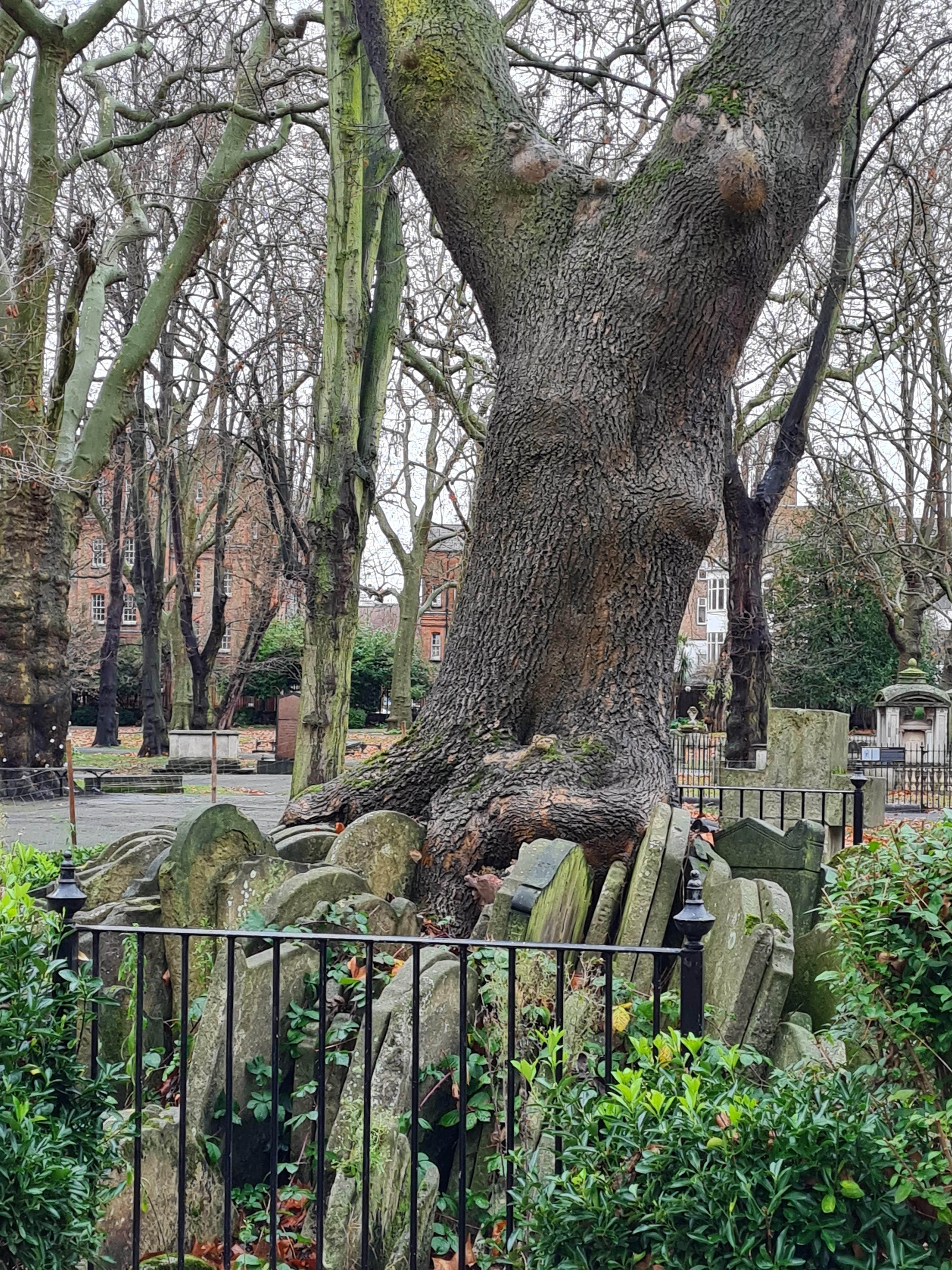At last—it may be, Death took spite
Or jesting only meant to fright—
He sought fo Jack night after night
The churchyards round;
And soon they met, the man and spike
In Pancras’ ground.
From Jack Hall, by Thomas Hood (1799—1845)
Old St Pancras Church Yard was, traditionally, remote and thus
any self-respecting Londoner wouldn’t linger long within its grounds. Of
course, this made an irresistible location for bodysnatching so lingering there in the afterlife wasn't likely to to give peace for too long either as a result!
Along with the many other lurid places and subject matters this appealed to Charles Dickens and its where his character, Jerry Cruncher took his son, Jerry Junior ‘fishing’ (that’s bodysnatching to you and me) in 'A Tale of Two Cities'.
Within the churchyard today stands The Hardy Tree. An eery sight to bestow, it exists due to the expansion of London's rail service (which saw the need of moving graves). The Tree itself is an Ash tree, planted at the time with the now unused headstones circled around it. As the tree has grown over the years, some have become embedded in its trunk in—life and death merging into a macabre beauty in some kind of gothic and gruesome monument.

